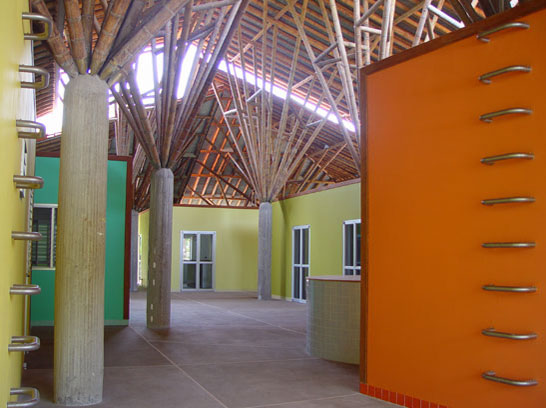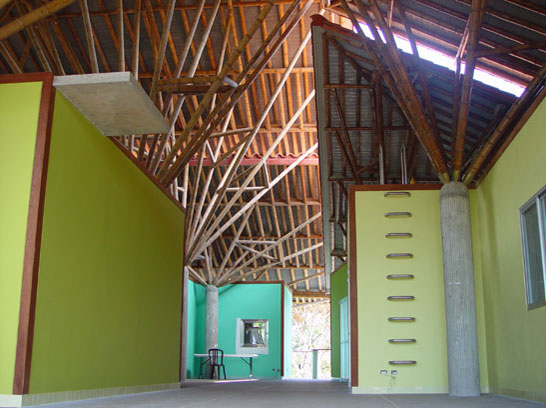
The LIQUID JUNGLE LAB began its first operations at the beginning of 2004.
The LJL was created with the intention of providing a state of the art research facility for scientists in order to study the complex interactions of species in the tropical Americas. The lab also serves as an example of an ecologically conscientious facility that tries to minimize potential impacts on the pristine environment. A combination of photovoltaic, passive solar water heating, high tech wastewater treatment, an active recycling program, and an organic farm, are ways that the LJL tries to live by example.
Despite it’s small size, Panama is one of richest countries in biodiversity in the world due to its location on the bridge between the North and the South American continents.
LJL is located in a very particular place from a geologic and biologic perspective. Millions of years ago this zone was a point of passage for organisms that were migrating between the continental landmasses of North and South America. At the same time, it is probable that during glaciations, the area surrounding LJL served as a refuge for several species that migrated from the low temperatures of the north until the climatic situation changed and thence could begin a new colonisation process.
![]()
Now this zone is still a crucial point, because it represents the transition between the tropical dry forest that extends to Costa Rica and the tropical rain forest that passes through the Darien zone and eventually into the Amazonian ecosystem.
Coiba (http://www.coiba.net/) and LJL are also unique because present here is one of the largest coral communities of the Central American Pacific. Additionally these coral communities attract and support large numbers of fish, invertebrate, and algal species associated with this kind of habitat.
Terrestrial areas of the project contain mangroves, mature and secondary forest, many natural water springs and some areas with recent history of agricultural and cattle use. This matrix of environments represents an interesting system for the study of the regeneration processes, reforestation and biodiversity of this kind. In addition, the work with the local community aims at finding ways to protect nature while promoting a sustainable land use and tenure.

The local fauna includes a long list of birds such as hummingbirds, manakins pelicans and a plethora of other marine birds. There are mammals, many unique to Central America, such as howler monkeys, coatis, raccoons, pacas, agoutis, tayras, margays and white-tailed deer.
At LJL there are present at least 12 coral species, and many reef fishes associated with this kind of environment. Also commonly sighted are two species of dolphins, and seasonal sightings of marine mega fauna such as humpback whales, killer whales and whale sharks.
A thorough terrestrial flora and fauna inventory was completed in 2006 by the Royal Botanical Garden of Madrid in order to provide a solid baseline knowledge of species inhabiting the area and to help plans for conservation that are fundamental to the LJL mission.
A similar type of inventory is a work in progress with visiting scientists from WHOI and Smithsonian to create a comprehensive inventory of marine species in the greater Isla Canales to Coiba cooridor.
Great attention and care has been put in the design of this unique field station.

Architects Sottsass Associati of Milano, Ettore Sottsass, Marco Zanini and Simon Velez have used bamboo in an innovative way to create the roof of this contemporary building.
Besides the central marine research facility, there is another, smaller station (El Eden) located deep within the mangroves, on the mainland. This facility includes basic accommodations for five scientists wishing to study tropical terrestrial environments especially mangrove and a view of the interior space of the lab which incorporates modern concepts of architectural space fostering a community atmosphere. riparian systems in a relatively isolated area.

Further along the mainland, a former cattle farm (Rosario) has been converted to an organic self-sustaining farm that provides for most of the food for the field stations while simultaneously providing an opportunity for agronomic and tropical forestry research. Already this model farm is beginning to set an example for the local farming community.